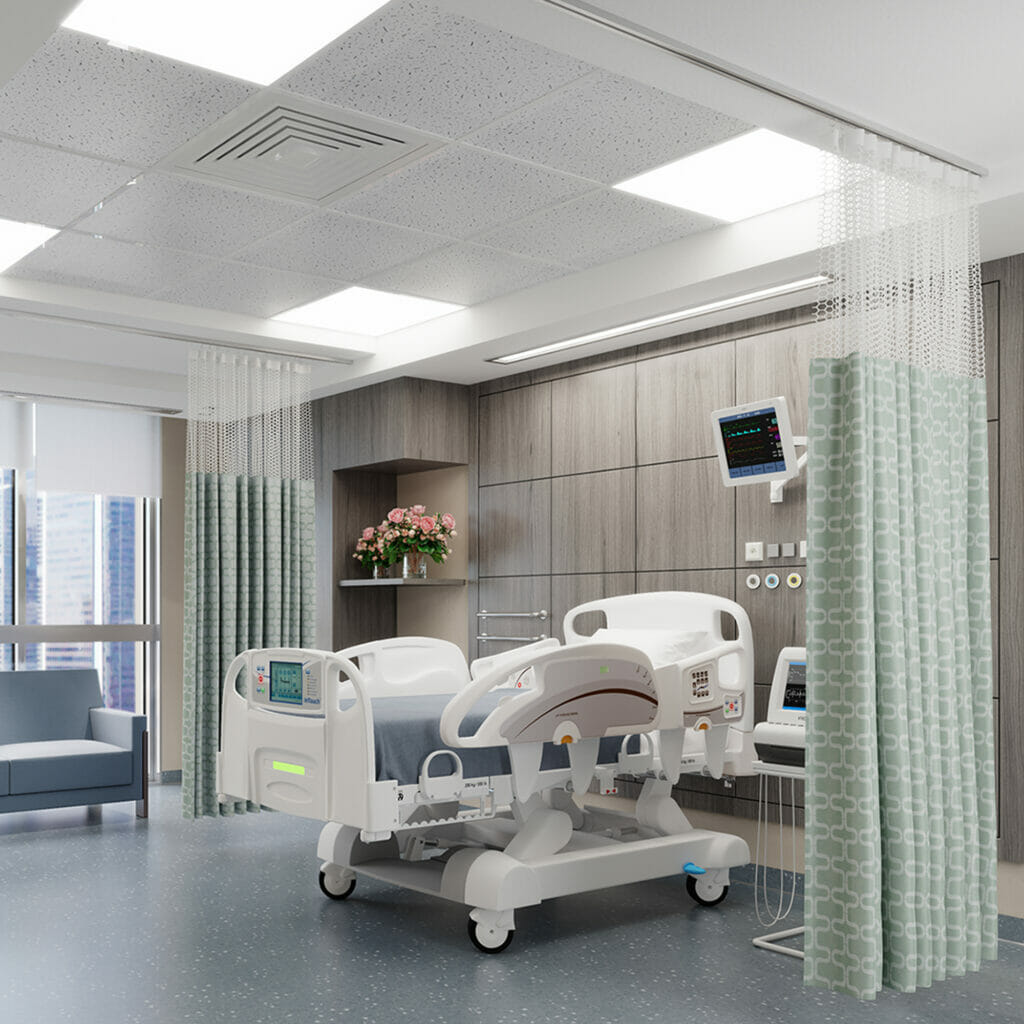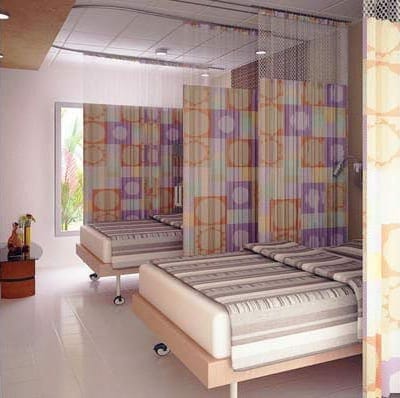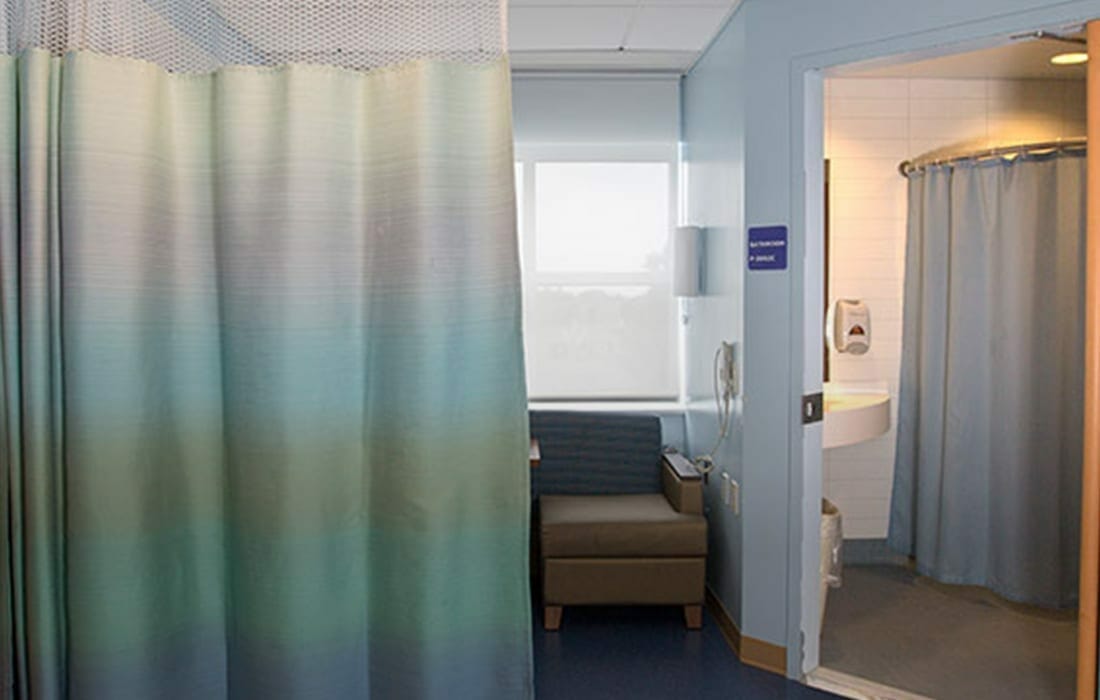Privacy hospital curtains play a crucial role in healthcare settings, serving as both a patient comfort measure and a frontline defense against infection. These curtains provide a sense of dignity and confidentiality for patients while also mitigating the spread of pathogens in medical environments. However, hospitals must strike a delicate balance between ensuring patient privacy and maintaining stringent infection control protocols.
In this blog, we explore the importance of privacy hospital curtains, their impact on infection control, and why upgrading to modern solutions can improve both patient care and hospital efficiency. We also highlight innovative solutions, such as HAIGuard™’s advanced curtain systems, that enhance hygiene standards while preserving patient comfort.

The Dual Purpose of Privacy Hospital Curtains
1. Enhancing Patient Comfort and Dignity
One of the fundamental purposes of privacy hospital curtains is to provide patients with a secure, enclosed space where they can feel at ease. Whether in shared rooms, emergency departments, or outpatient facilities, these curtains create a personal zone, minimizing exposure and allowing for confidential conversations between patients and healthcare providers.
Patient dignity is a cornerstone of quality healthcare, and privacy curtains significantly contribute to this. Studies show that patients who feel comfortable in their environment experience lower stress levels, which can positively impact their recovery. Having high-quality privacy curtains ensures that hospitals foster a patient-centered approach to care.
2. Preventing the Spread of Infections
While privacy curtains offer comfort, they can also become breeding grounds for bacteria if not properly maintained. Hospital-acquired infections (HAIs) remain a pressing concern, with pathogens such as MRSA and C. difficile often found on high-touch surfaces—including traditional fabric curtains. Without frequent cleaning or replacement, contaminated curtains can inadvertently contribute to infection spread.
To mitigate this risk, many healthcare facilities are turning to innovative curtain solutions, such as disposable or antimicrobial-treated options. HAIGuard™’s Curtain Compliance Program ensures that hospital curtains undergo a rigorous multi-stage sanitization process, enhancing their effectiveness in infection control.
Innovations in Privacy Hospital Curtains for Infection Control
To improve hygiene standards and reduce the risk of contamination, hospitals are shifting toward more advanced curtain solutions. Here are some of the latest innovations in privacy hospital curtains:
1. Disposable Privacy Curtains
Disposable hospital curtains have emerged as a practical solution for infection control. Unlike traditional fabric curtains, which require frequent laundering, disposable curtains are replaced at regular intervals, significantly reducing the chances of cross-contamination.
These curtains often feature antimicrobial coatings that further limit bacterial growth. Many hospitals now integrate disposable curtains as part of their infection prevention strategies, recognizing their role in maintaining a sterile environment.
2. Antimicrobial-Treated Curtains
For hospitals that prefer reusable curtains, antimicrobial-treated fabrics provide an added layer of protection. These curtains are infused with antimicrobial agents that inhibit the growth of bacteria, fungi, and viruses, making them a safer option for healthcare facilities.
HAIGuard™’s sanitization process includes mechanical, chemical, and steam treatments to ensure every curtain meets stringent hygiene standards before being reinstalled.
3. Hand Shield Curtains: A Game-Changer in Infection Prevention
An innovative alternative to traditional privacy curtains is the Hand Shield Curtain, designed to minimize hand-to-surface contact. Unlike standard curtains, which require frequent handling, Hand Shield Curtains incorporate touch-free technology, reducing the risk of germ transmission.
For a deeper dive into how Hand Shield Curtains are revolutionizing hospital hygiene, check out this article: Hand Shield Curtains: An Innovative Solution for Enhanced Hospital Hygiene.
Choosing the Right Privacy Hospital Curtains
When selecting privacy curtains for a hospital setting, several key factors must be considered:
- Material and Durability – Opt for high-quality, flame-resistant materials that withstand frequent cleaning and wear.
- Ease of Maintenance – Consider curtains that are easy to clean, disinfect, or replace. HAIGuard™’s Curtain Compliance Program ensures seamless sanitization and replacement schedules.
- Infection Control Features – Look for antimicrobial coatings, disposable options, or low-touch alternatives to reduce pathogen spread.
- Aesthetics and Comfort – Patient-friendly designs and colors can help create a calming environment, improving overall patient experience.
The Future of Privacy Hospital Curtains

The evolution of privacy hospital curtains is moving toward smarter, more hygienic solutions. Future trends include self-cleaning curtains, UV-light sterilized materials, and curtains equipped with built-in monitoring systems that alert hospital staff when replacement is necessary.
As healthcare facilities strive to enhance patient safety and comfort, adopting state-of-the-art privacy curtain solutions will be a significant step forward. Upgrading hospital cubicle curtains not only improves patient care but also enhances overall hospital efficiency. Learn more about the benefits of upgrading in this detailed article: Why Upgrading Your Hospital Cubicle Curtains Can Improve Patient Care.
Privacy hospital curtains play a vital role in both patient comfort and infection prevention. By implementing advanced curtain solutions, hospitals can achieve a balance between ensuring privacy and maintaining stringent hygiene standards.
With innovations like disposable curtains, antimicrobial treatments, and touch-free Hand Shield Curtains, healthcare facilities can significantly reduce the risk of HAIs while enhancing patient experience. HAIGuard™ continues to lead the industry with its commitment to superior hygiene and compliance programs, ensuring hospitals can provide safer, more efficient care environments.
By investing in high-quality privacy hospital curtains, healthcare institutions not only protect their patients but also foster a more effective, patient-centered approach to medical care.








